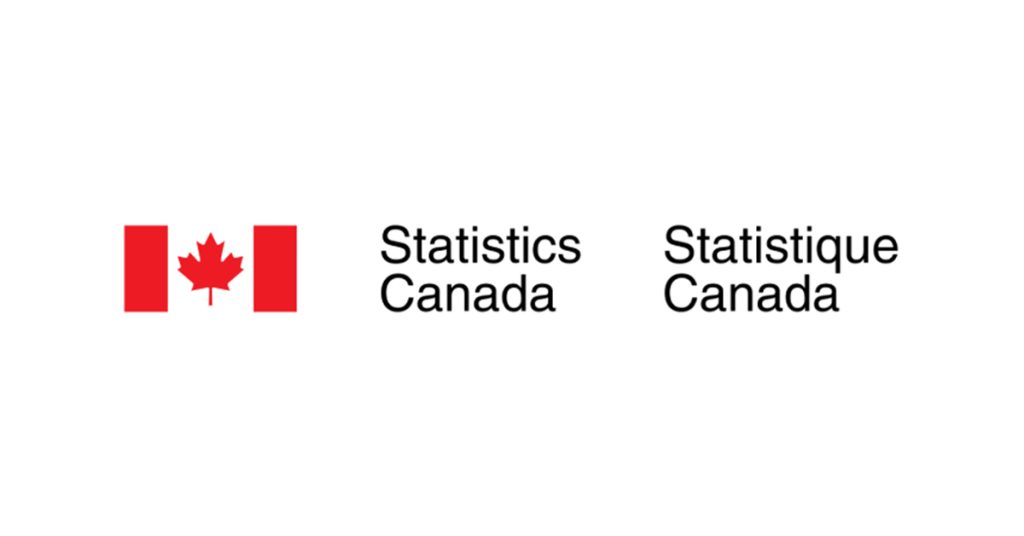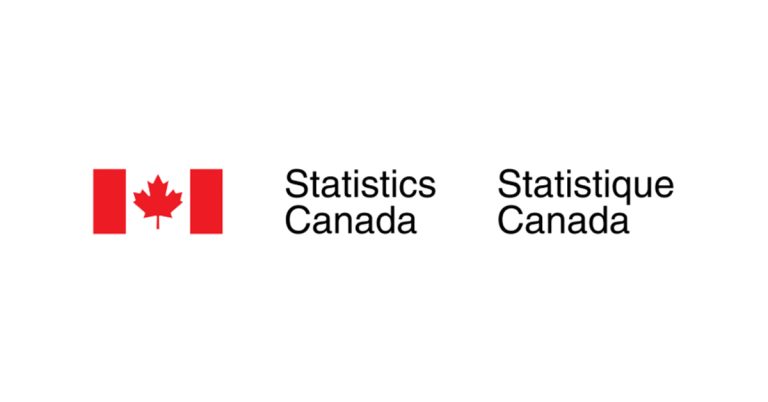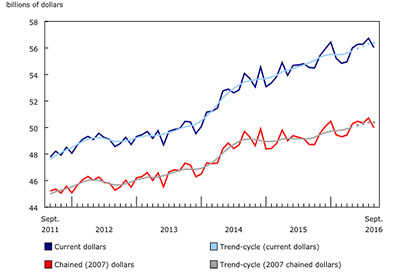Labour Force Survey, August 2025

September 10, 2025
Employment declined by 66,000 (-0.3%) in August, largely the result of a decline in part-time work, and the employment rate fell 0.2 percentage points to 60.5%. The unemployment rate rose 0.2 percentage points to 7.1%.
Employment fell for core-aged (25 to 54 years old) men (-58,000; -0.8%) and core-aged women (-35,000; -0.5%) in August. There was little change in employment for youth aged 15 to 24 and people aged 55 and older.
Employment decreased across several industries in August, led by professional, scientific and technical services (-26,000; -1.3%), transportation and warehousing (-23,000; -2.1%), and manufacturing (-19,000; -1.0%). On the other hand, there was an increase in construction employment (+17,000; +1.1%).
Several provinces recorded employment declines in August; the largest were in Ontario (-26,000, -0.3%), British Columbia (-16,000; -0.5%) and Alberta (-14,000; -0.6%).
Total hours worked were little changed in August (+0.1%) and were up 0.9% compared with 12 months earlier.
Average hourly wages among employees increased 3.2% (+$1.12 to $36.31) on a year-over-year basis in August, following growth of 3.3% in July (not seasonally adjusted).
Employment falls for second month in a row
Employment fell by 66,000 (-0.3%) in August, extending the decline recorded in July (-41,000; -0.2%). The employment decrease in August was mostly in part-time work (-60,000; -1.5%). Full-time employment was little changed in August, following a decline in July (-51,000; -0.3%).
Chart 1
Employment rate decreases in August

The employment rate—the proportion of the working-age population who are employed—fell 0.2 percentage points to 60.5% in August, the second consecutive monthly decline. The employment rate has been on a downward trend since the beginning of the year, falling 0.6 percentage points from January to August.
The number of self-employed workers fell by 43,000 (-1.6%) in August. Self-employment has trended down in recent months, offsetting gains recorded in the second half of 2024 and in early 2025. In August, there was little change in the number of private and public sector employees.
Employment declines among core-aged men and women
In August, employment fell both for core-aged men (-58,000; -0.8%) and core-aged women (-35,000; -0.5%).
Infographic 1
Employment rate by age group, August 2025

Among core-aged men, the employment rate in August (85.8%) was down 0.7 percentage points from July and was the lowest since March 2017 (excluding 2020 and 2021, during the COVID-19 pandemic). Similarly, the employment rate of core-aged women fell 0.5 percentage points to 79.5% in August, the lowest rate since August 2018.
There was little change in employment among youth aged 15 to 24 and among people aged 55 and older in August.
Unemployment rate rises to 7.1% in August
The unemployment rate rose 0.2 percentage points to 7.1% in August. Since January 2025, it has increased 0.5 percentage points. The unemployment rate in August was the highest since May 2016 (excluding 2020 and 2021). In comparison, the unemployment rate averaged 6.0% from 2017 to 2019, just prior to the COVID-19 pandemic.
There were 1.6 million unemployed people in August, an increase of 34,000 (+2.2%) from July. The layoff rate was 1.0% in August, which had edged up compared with the rate observed 12 months earlier (0.9%) (not seasonally adjusted). This represents the proportion of people who were employed in July but had become unemployed in August as a result of a layoff.
Those who were unemployed in July continued to face difficulties finding work in August. Just 15.2% of those who were unemployed in July had found work in August, lower than the corresponding proportion for the same months from 2017 to 2019 (23.3%) (not seasonally adjusted).
Chart 2
Unemployment rate increases to 7.1% in August

The participation rate—the proportion of the population aged 15 and older who were employed or looking for work—fell by 0.1 percentage points to 65.1% in August.
Unemployment rate up for core-aged men and women
In August, the unemployment rate increased among both core-aged men (+0.3 percentage points to 6.4%) and core-aged women (+0.3 percentage points to 5.7%).
Infographic 2
Unemployment rate by age group, August 2025

For people aged 55 and older, the unemployment rate was unchanged at 5.3% in August.
Despite little change in the month, the youth unemployment rate (14.5%) remained high and was 0.1 percentage points below the rate recorded in July, which was the highest since September 2010 (excluding 2020 and 2021).
Returning students continue to face a tough summer job market in August
From May to August, the Labour Force Survey (LFS) collects labour market information from students who attended school full time in March and who intend to return to school full time in the fall.
The unemployment rate for returning students stood at 16.9% in August, similar to the rate observed 12 months earlier (16.3%) (not seasonally adjusted).
Chart 3
Unemployment rate trending up in recent years for returning students during the summer months

For the summer of 2025 overall (the average from May to August), the unemployment rate for returning students aged 15 to 24 was 17.9%. This was the highest since the summer of 2009 (18.0%), excluding the pandemic year of 2020. The unemployment rate for returning students has increased each summer since 2022 (when it was 10.4%).
The unemployment rate among returning students in the summer of 2025 was higher for men (19.2%) than for women (16.8%).
Fewer people employed in professional, scientific and technical services, transportation and warehousing, and manufacturing
Employment decreased in professional, scientific and technical services in August (-26,000; -1.3%), following five months of little change. Despite the monthly decline, employment in the industry was up 36,000 (+1.8%) compared with 12 months earlier.
Employment fell by 23,000 (-2.1%) in transportation and warehousing in August, offsetting a similar-sized increase in July. On a year-over-year basis, employment in the industry was little changed in August.
Chart 4
Employment change by industry in August 2025

There were fewer people working in manufacturing in August (-19,000; -1.0%). Compared with the recent peak of January 2025, employment in manufacturing has declined by 58,000 (-3.1%).
On the other hand, employment rose in construction (+17,000; +1.1%) in August, offsetting most of the decline in July (-22,000; -1.3%). Employment in construction has recorded little net variation since the beginning of the year, and the increase in August was the first since January.
Ontario, British Columbia, and Alberta record the largest employment declines
Employment in Ontario decreased by 26,000 (-0.3%) in August. Compared with the recent peak of February 2025, employment in the province was down by 66,000 (-0.8%) in August. The unemployment rate in Ontario declined 0.2 percentage points to 7.7% in August, as the number of people searching for work edged down.
Since the beginning of the year, regions of Southern Ontario have faced an uncertain economic climate, brought on by the threat or imposition of tariffs, including on motor vehicle and parts exports. Across Canada’s 20 largest census metropolitan areas, the highest unemployment rates in August were in Windsor (11.1% compared with 9.1% in January), Oshawa (9.0% compared with 8.2% in January) and Toronto (8.9% compared with 8.8% in January) (three-month moving averages).
In British Columbia, employment fell by 16,000 (-0.5%) in August, the second consecutive monthly decrease. Losses in the month were mainly among core-aged men (-13,000; -1.2%). The unemployment rate in British Columbia rose 0.3 percentage points to 6.2%.
In Alberta, employment fell by 14,000 (-0.6%) in August—also the second consecutive monthly decrease. The biggest declines in the month were in manufacturing and in wholesale and retail trade. The unemployment rate in Alberta rose 0.6 percentage points to 8.4% in August, the highest rate since August 2017 (excluding 2020 and 2021).
Map 1
Unemployment rate by province and territory, August 2025

Infographic 3
Unemployment rates highest in southern Ontario census metropolitan areas

Employment also declined in New Brunswick (-6,500; -1.6%), Manitoba (-5,200; -0.7%), and Newfoundland and Labrador (-3,200; -1.3%) in August. Meanwhile, Prince Edward Island had an employment gain (+1,100; +1.2%).
Employment held steady for a second consecutive month in Quebec in August. The number of people looking for work increased in the month (+24,000; +9.0%), pushing the unemployment rate up 0.5 percentage points to 6.0%.
In the spotlight: Nearly 1 in 10 workers would prefer to work more hours
In the context of a cooling labour market, broader measures of labour underutilization can offer a more comprehensive picture of the gap between labour demand and labour supply.
Chart 5
Time-related underemployment rate highest in Newfoundland and Labrador, Ontario and Alberta

In August 2025, the LFS asked workers if they would have preferred to work more, less or the same number of hours during the LFS reference week, for the same rate of pay. Among all employed people, 8.8% were considered in time-related underemployment in August—that is, they would have preferred to work more hours and were available to do so (population aged 15 to 69, not seasonally adjusted). The underemployment rate was higher among part-time workers (23.0%) than among full-time workers (6.2%).
Infographic 4
Employees in time-related underemployment have lower hourly wages than other employees

Across provinces, the share of workers in underemployment was highest in Newfoundland and Labrador (11.3%), Ontario (9.6%) and Alberta (9.4%) in August. The three provinces also had unemployment rates that were above the national average.
Compared with their counterparts who were not underemployed, employees in time-related underemployment worked a largely similar average number of hours but had notably lower hourly wages. This indicates that underemployment is largely driven by the need to compensate for a lower rate of pay.
Among workers who would have preferred to work more hours, over half (55.7%) reported that their main reason was to cover current expenses, while 17.9% reported that the main reason was to save money for a large purchase such as a home or car. Lower proportions of workers would have preferred to work more hours in response to general economic uncertainty (6.3%), to save money for retirement (4.5%) or for an emergency fund (4.7%).
While some workers want to work more hours, others would prefer to work fewer hours. In August, 15.9% of employed persons would have preferred working fewer hours during the LFS reference week. Nearly half (45.0%) indicated that the main reason was to have more leisure time, while 22.5% said it was due to family responsibilities and 17.5% because of work-related stress.
Workers in accommodation and food services (22.7%), finance, insurance, real estate, rental and leasing (21.3%) and health care and social assistance (21.2%) were most likely to cite work-related stress as the main reason for wanting to work fewer hours.
In the spotlight: One-third of multiple job holders in August did so to pay for essential needs
Multiple jobholding is the practice of having two or more jobs simultaneously. The rate of multiple jobholding is part of the Statistical Framework on Quality of Employment, as working more than one job may signal that the main job provides insufficient earnings. However, workers may hold multiple jobs for other reasons, such as to gain skills and expertise in other occupations.
The rate of multiple jobholding has been relatively stable in recent years. In August 2025, 5.4% of workers held more than one job, down slightly from August 2024 (5.5%) and from the pre-pandemic rate in August 2019 (5.5%) (three-month moving averages, not seasonally adjusted). For more information about historical trends in multiple jobholding since 1976 in Canada, see: “Multiple jobholders, 2023.”
In August 2025, one-third (33.6%) of multiple jobholders reported that the main reason for holding multiple jobs was to pay for essential needs, while another third (33.6%) indicated that it was to earn extra income (population aged 15 to 69). These shares were little changed from August 2023, the last time the question was asked in the LFS.
Less than 1 in 5 (16.6%) multiple jobholders in August reported that the main reason was to engage in work they were passionate about, up slightly from August 2023 (14.5%).










